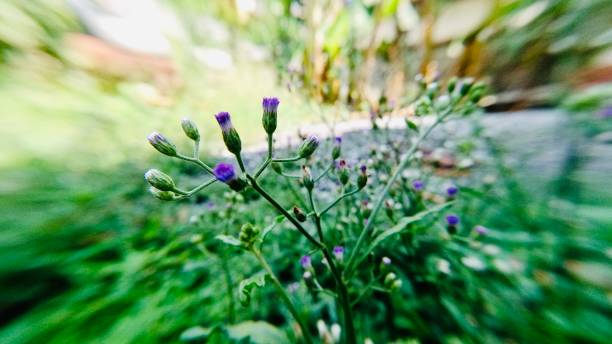Lilac Tasselflower, also known as Emilia sonchifolia, is a beautiful flower native to Asia that can be used in a variety of ways, from adding color to indoor spaces to creating natural dyes for fabrics. When planting and caring for Lilac Tasselflower, make sure to consider factors such as soil type, sun exposure, and pest prevention. Whether grown indoors or outdoors, Lilac Tasselflower can add a touch of vibrancy to any space.
How to use Lilac Tasselflower in everyday life
Lilac Tasselflower can be used in various ways, such as:
- As cut flowers in vases
- As decorative flowers in bouquets and arrangements
- As a natural dye for fabrics
- As an ingredient in herbal teas and infusions
How to care for Lilac Tasselflower
When caring for Lilac Tasselflower, consider the following:
- Plant in well-drained, fertile soil with a slightly acidic soil pH balance of 6.0-7.5
- Water regularly to maintain moist soil, but avoid overwatering
- Fertilize with a diluted liquid fertilizer once every two weeks during the bloom cycle
- Remove spent blooms to promote new growth and extend blooming period
- Watch out for common pests and diseases such as slugs, snails, aphids, powdery mildew, and leaf spot
Tips on how to grow Lilac Tasselflower indoors
To grow Lilac Tasselflower indoors, follow these tips:
- Use a well-draining potting mix and a pot with drainage holes
- Place the pot in a spot with bright, indirect sunlight
- Water regularly, but make sure the soil is not soggy
- Fertilize with a diluted liquid fertilizer once a month during the growing season
Tips on how to grow Lilac Tasselflower outdoors
To grow Lilac Tasselflower outdoors, follow these tips:
- Choose a spot with full sun exposure or partial shade in hotter climates
- Plant in well-drained, fertile soil with a slightly acidic soil pH balance of 6.0-7.5
- Water regularly to maintain moist soil, but avoid overwatering
- Fertilize with a diluted liquid fertilizer once every two weeks during the bloom cycle
- Watch out for common pests and diseases such as slugs, snails, aphids, powdery mildew, and leaf spot
Fact Sheet
| Family | Asteraceae |
|---|---|
| Plant Type | Annual |
| Mature Size | Up to 16 inches tall |
| Sun Exposure | Full sun |
| Soil Type | Sandy, well-drained |
| Soil pH | 6.0 – 7.5 |
| Bloom Time | Late spring to early summer |
| Flower Color | Pink or lilac |
| Hardiness Zones | 8 – 10 |
| Native Area | Asia |
What we love from Amazon this week
Buy these wonderful flowers directly from Amazon:















